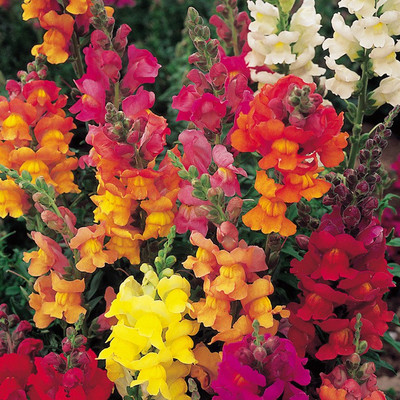Airex Antirrhinum Snapdragon Seed(15 per packet)
Quick Overview
Product Price Comparison
How to Grow Antirrhinum Snapdragon Plants:Snapdragon plants grows best in full sun. They will grow well in average soil. Soil should be well draining.Add a general purpose fertilizer before planting if the soil is poor.Plant Snap Dragons outdoors after the last frost for your area. Fertilize once a month. Flowers will bloom in June. After the flowers have died off, cut the plant back to about six inches. Then add some general purpose fertilizer. This will promote new growth and a second bloom.Snapdragons are very hardy. They can withstand a heavy frost. So, if your plant is still blooming in the fall, do not be too quick to clean up the flower garden.Propagation:Grow snapdragon flowers from seed. Snapdragon germination can take up to three weeks, so start seeds indoors about two months before the last expected frost. Two months after the snapdragon seeds sprout, transplant the strongest seedlings into plant containers outdoors. DonŌĆÖt transplant any snapdragon flowers that already have buds ŌĆō these most likely will not survive the transplant.Sowing: Winter season annuals like antirrhinum are sown during SeptemberŌĆōOctober in plains and during MarchŌĆōApril in hills. Seeds are sown in nursery beds, earthen pots, seed pans or wooden seed trays. The seed compost should consist of one part each of garden soil, coarse sand, farmyard manure and leaf-mould. For preparing the nursery beds, the soil should be dug up thoroughly and sufficient farmyard manure, should be mixed in soil. Raised nursery beds of convenient size (normally 60cm wide and 15cm high) should be prepared. If soil is heavy, some quantity of sand may be added. It is better if the soil of nursery bed or earthen pots is sterilized with 2% formalin. For this, soil is drenched with formalin solution and is covered with polythene sheet for 45hr. Afterwards, the polythene is removed and soil is dried before sowing the seeds. Before sowing, the seeds should be treated with Cerason (0.2%) and Captaf (0.2%) to prevent the seedlings from damping off disease. The seeds should be sown thinly and evenly as thick sowing causes damping off of seedlings. Mixing of fine sand in very small seeds is advisable for even sowing. In nursery beds, the seeds are sown in rows spaced 6cm apart. Then, they are covered with finely sieved leaf-mould. Watering is to be done with a watering can having a fine rose both in beds and pots. In beds, when germination is over, water is given for proper moisture. Thereafter, the beds should be kept weed-free.


